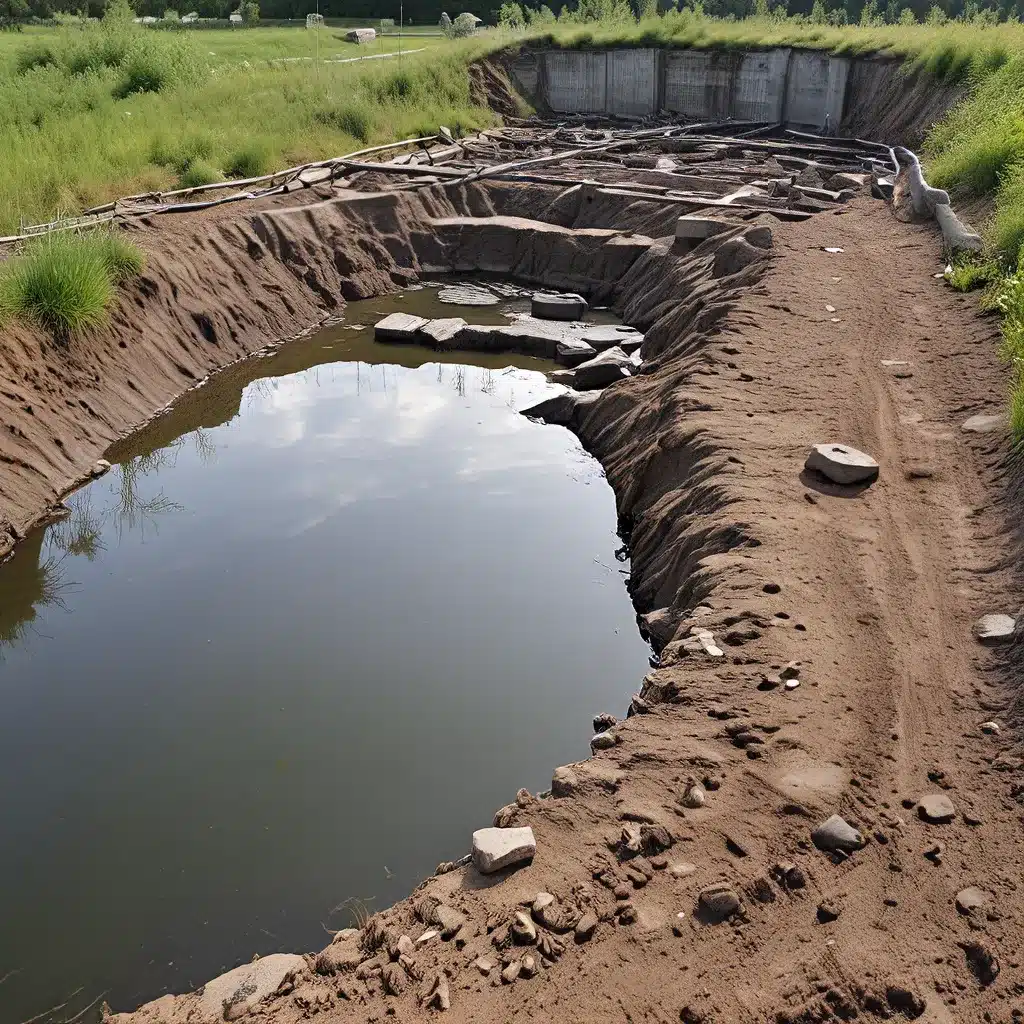
Bioremediation in Wastewater Treatment: Harnessing Nature’s Potential
Imagine a world where the very microbes that call our planet home could be our allies in the fight against environmental degradation. That’s the promise of bioremediation – the use of living organisms, primarily microbes, to break down and remove harmful pollutants from our water, soil, and air. And as we stare down the barrel of global challenges like climate change, biodiversity loss, and resource depletion, this nature-based solution is taking center stage.
As someone who’s passionate about the environment and sustainable solutions, I’ve been fascinated by the power of bioremediation. It’s like nature’s very own clean-up crew, marshaling the incredible capabilities of microscopic life to tackle some of our biggest ecological problems. And the more I learn about it, the more I’m convinced that harnessing this potential could be a game-changer for the future of our water treatment and environmental services.
Let me walk you through the world of bioremediation and how it’s reshaping the way we approach wastewater management. It’s a journey that’s equal parts scientific wonder and practical innovation – and one that just might hold the key to a more sustainable future.
The Microbial Marvels of Bioremediation
At the heart of bioremediation are the unsung heroes of the natural world: microorganisms. These tiny creatures, from bacteria to fungi, possess an incredible array of capabilities when it comes to metabolizing and breaking down all kinds of contaminants. And researchers are increasingly uncovering just how versatile and powerful these microbial marvels can be.
Take, for example, the case of the Anthropocene microbiome. As human activities have reshaped the planet, we’ve seen a corresponding shift in the microbial communities that call our ecosystems home. And in many cases, these changes haven’t been for the better – with a rise in opportunistic, fast-growing microbes that can thrive in the face of pollution and environmental stress.
But here’s the thing: these same microbes that are causing problems could also hold the key to solving them. By understanding the mechanisms that allow them to break down and metabolize harmful compounds, we can harness their power for good. It’s like discovering that the perfect cleaning solution was under our nose the whole time – we just had to know where to look.
Harnessing the Power of Nature’s Cleanup Crew
So, how exactly do we put these microbial marvels to work in the realm of wastewater treatment? Well, the process of bioremediation involves leveraging the natural abilities of certain microbes to degrade, transform, or sequester a wide range of contaminants, from heavy metals to organic pollutants.
The beauty of bioremediation is that it’s a highly adaptable approach. Depending on the specific challenges faced in a given water treatment system, researchers can carefully select and cultivate the right microbial communities to get the job done. For example, certain bacteria are known to be particularly effective at breaking down persistent organic pollutants, while others excel at removing heavy metals from wastewater.
But it’s not just about finding the right microbes – it’s also about creating the optimal conditions for them to thrive and do their work. This could involve adjusting factors like pH, temperature, and nutrient levels to create an environment that’s tailored to the specific needs of the microorganisms you’re harnessing.
And the benefits of this approach go far beyond just cleaning up our water. By leveraging the innate capabilities of nature’s own cleanup crew, we can do so in a way that’s far more sustainable and eco-friendly than traditional chemical-based treatments. It’s a win-win for both the environment and our bottom line.
The Future of Wastewater Treatment is Microbial
As exciting as the current state of bioremediation is, I can’t help but feel that we’ve only scratched the surface of its potential. With continued research and innovation, I believe we’ll see this nature-based approach become an increasingly integral part of the wastewater treatment landscape.
Just imagine a future where every water treatment plant has its own custom-designed microbial consortium, engineered to tackle the specific pollutants and challenges they face. Or picture wastewater infrastructure that incorporates bioremediation as a core component, seamlessly integrating these living, breathing cleanup crews into the very fabric of our water systems.
And the implications go beyond just wastewater – Inland Waters is already exploring ways to apply bioremediation principles to a wider range of environmental challenges, from soil remediation to air purification. It’s a holistic, nature-inspired approach that could revolutionize the way we tackle some of our most pressing ecological issues.
Of course, as with any emerging technology, there are still questions and challenges to be addressed. How do we scale up bioremediation processes to meet the demands of modern water treatment? How do we ensure the safety and efficacy of these microbial interventions? And what are the long-term implications for ecosystem health and biodiversity?
These are the kinds of questions that researchers, policymakers, and environmental advocates are grappling with every day. And while the answers may not always be clear-cut, I’m convinced that the potential benefits of bioremediation far outweigh the risks. After all, when it comes to protecting our planet and securing a sustainable future, we need to be willing to think outside the box and embrace the power of nature’s own solutions.
So, who’s ready to join me in this microbial revolution? Because if there’s one thing I know for sure, it’s that the future of wastewater treatment is going to be a whole lot greener – and a whole lot more fascinating – than we ever imagined.


